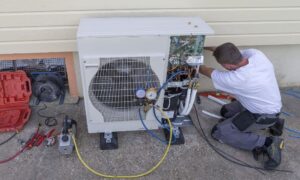
The Net asset value (NAV) of a mutual fund investmentis announced by the Asset Management Company (AMC)daily, irrespective of the type of mutual fund. The NAV of mutual funds has to be announced for all the plans of all the schemes of the AMC. Typically, it is compulsory to disclose the NAV on the website by evening, and that becomes the basis for investors the next day. NAV is the unit value of the fund. If the fund has issued 1 lakh units and the value of the portfolio is Rs.1 crore and the expenses are Rs.2 lakh then the NAV per unit will be Rs.98 {(1 crore – 2 lakh) / 1 lakh units}. When it comes to equities, what are the factors that enhance the price or NAV?
Factors that affect the price or NAV or an equity mutual funds
- Increase in the market price
- The entry of new investors at higher price or NAV
- Receipt of dividends
- The exit of old investors at lower price or NAV
Typically the NAV of the fund will go up when the worth of the corpus increases. If the fund is holding Tata Industries and the stock is up by 20% in the last 1 year, then to that extent the value of the fund will go up. The value of the NAV will also go up proportionately. Here are 4 factors that will enhance the NAV of the fund.Let’s understand these factors in detail so that you can invest in mutual funds without any hindrances:
– When the price of the shares held by the equity fund appreciates, then the value of the fund will rise. Since the NAV is evaluated based on the market value of the fund portfolio, any price rise will enhance the NAV of the fund. The impact on NAV is more when the stocks with the more significant weight appreciate in value. Smaller weight stocks do not have such a profound impact on NAV.
– When the mutual fund companies held in the portfolio declare dividends, then the dividend adds to the corpus value of your fund. Now more considerable corpus value is being spread across the existing units, and hence that will also be NAV accretive.
– NAV of the fund will also increase for existing unitholders if new investors enter into the fund at higher NAVs. Let us say a fund issued units at Rs.20 per unit. After 2 years, the NAV went up to Rs.40. The same investment would now acquire only half the number of units. Thus the increase in the number of units will be much lower than the value accretion to the fund corpus. This will enhance the NAV for existing holders.
– If the current investors exit the fund at lower NAVs that is also accretive to the NAV. If you bought the fund at Rs.15 and then exited at Rs.10, then the lesser value has gone out, but the same number of units has exited the fund. This is again value accretive to the NAV of the fund for loyal investors.








